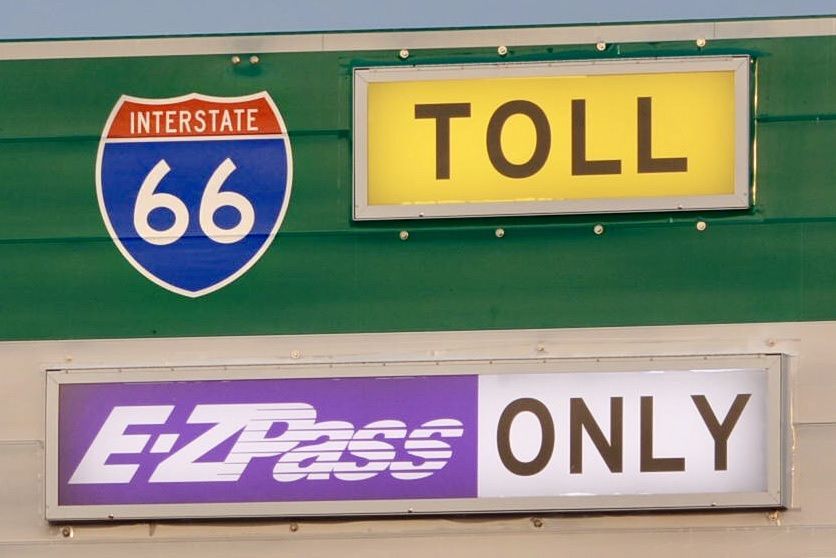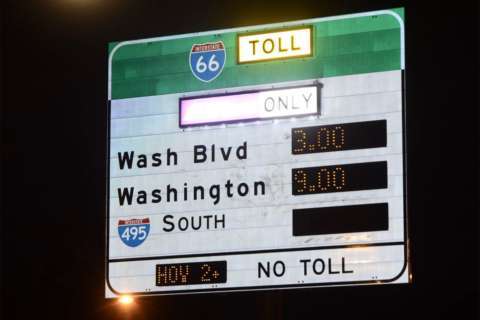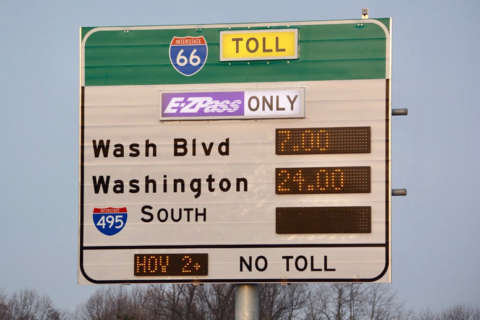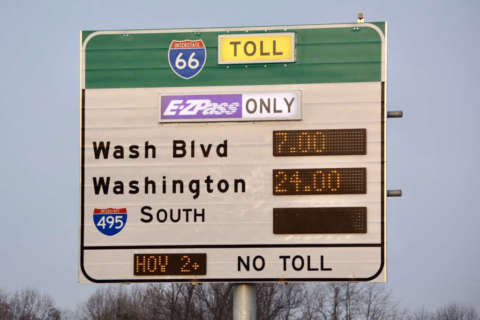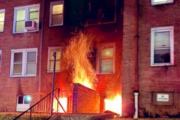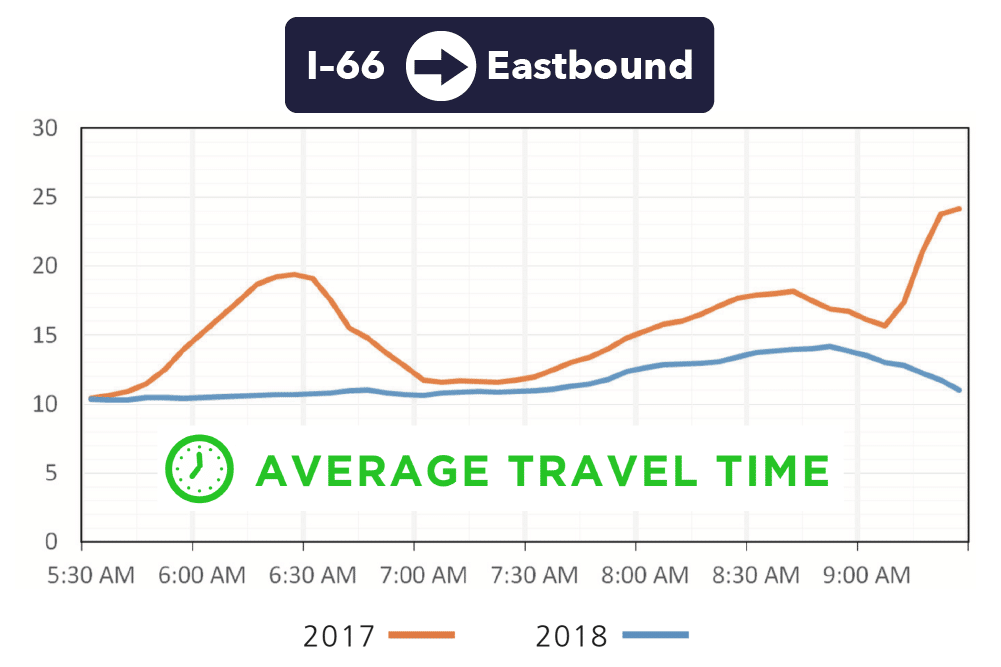
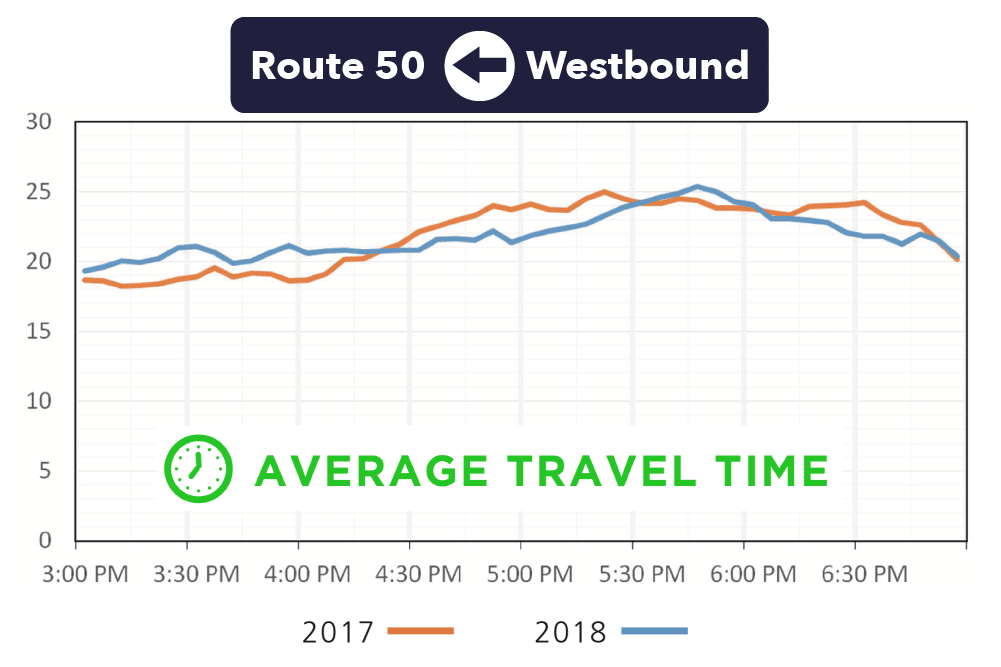
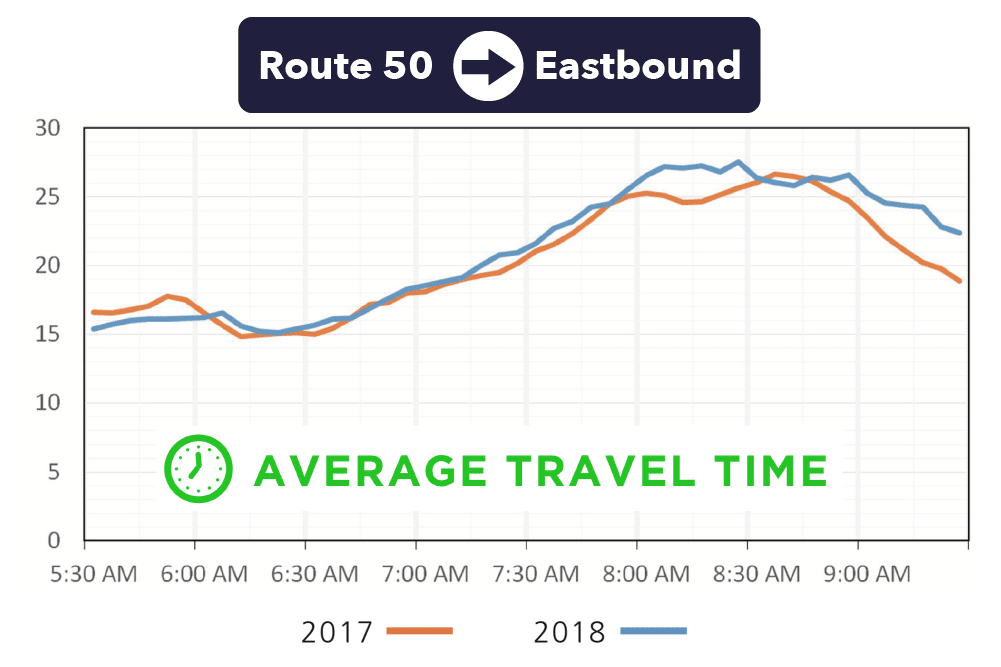
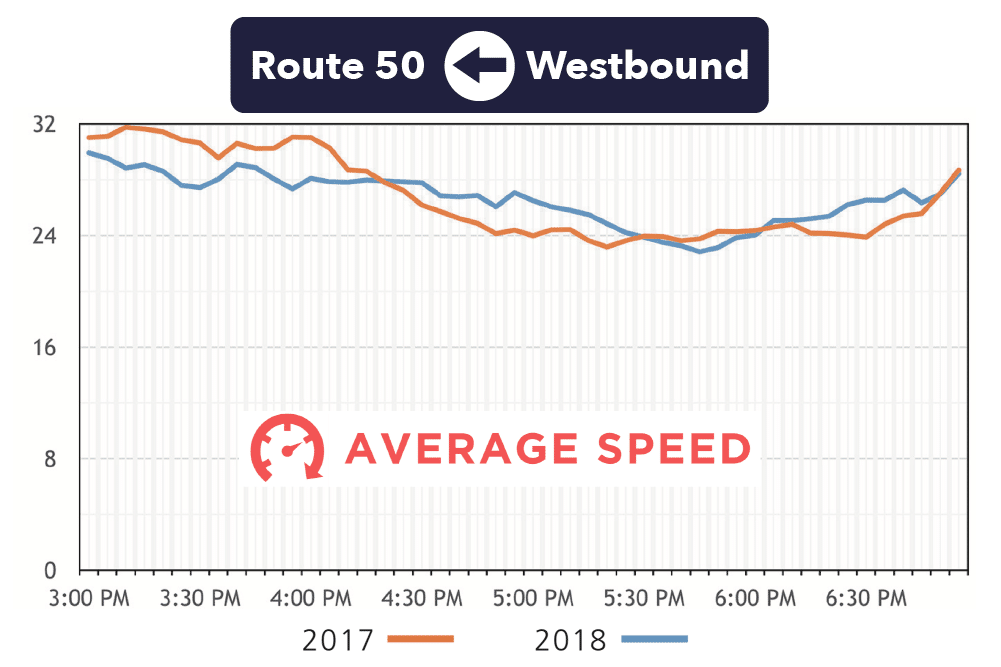
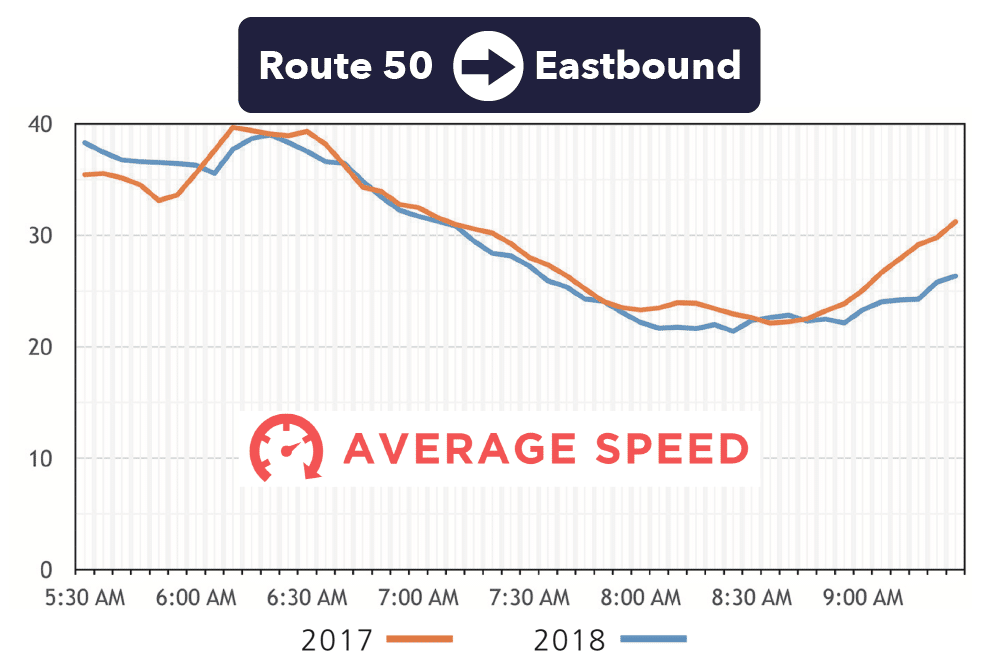
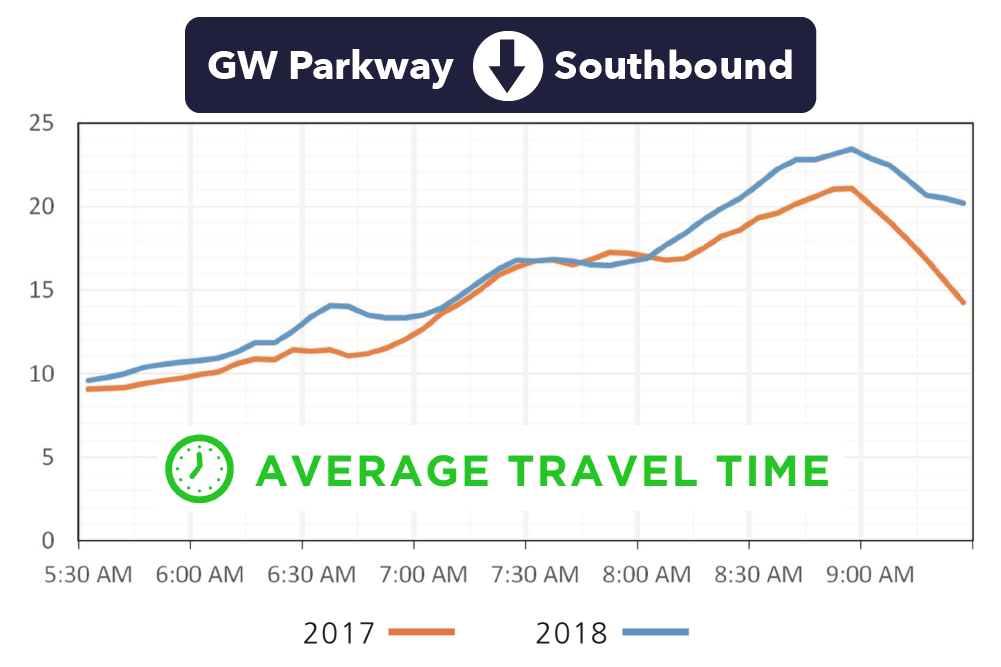
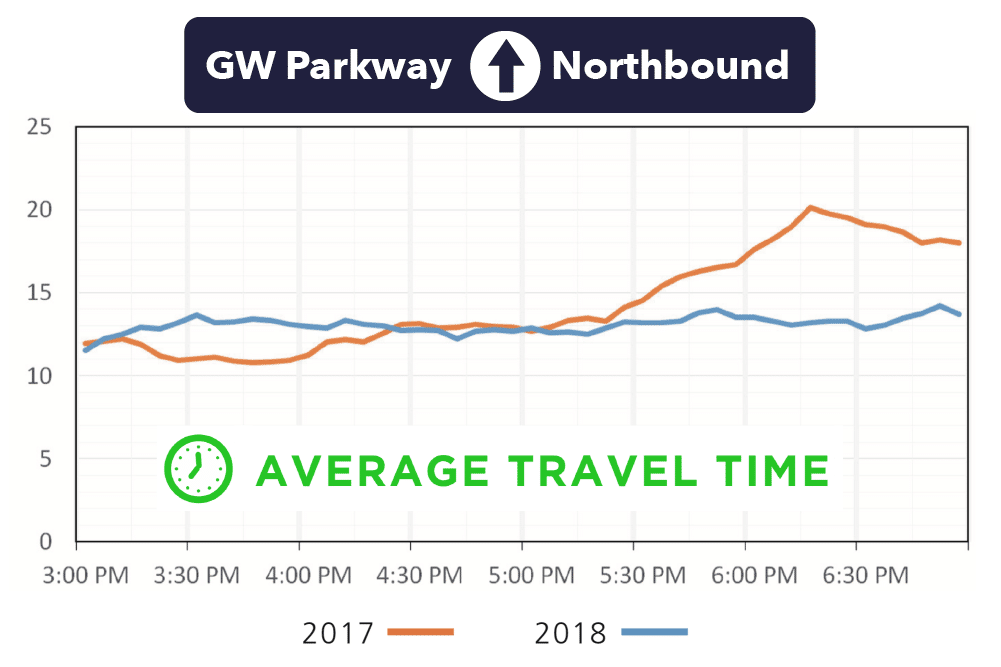
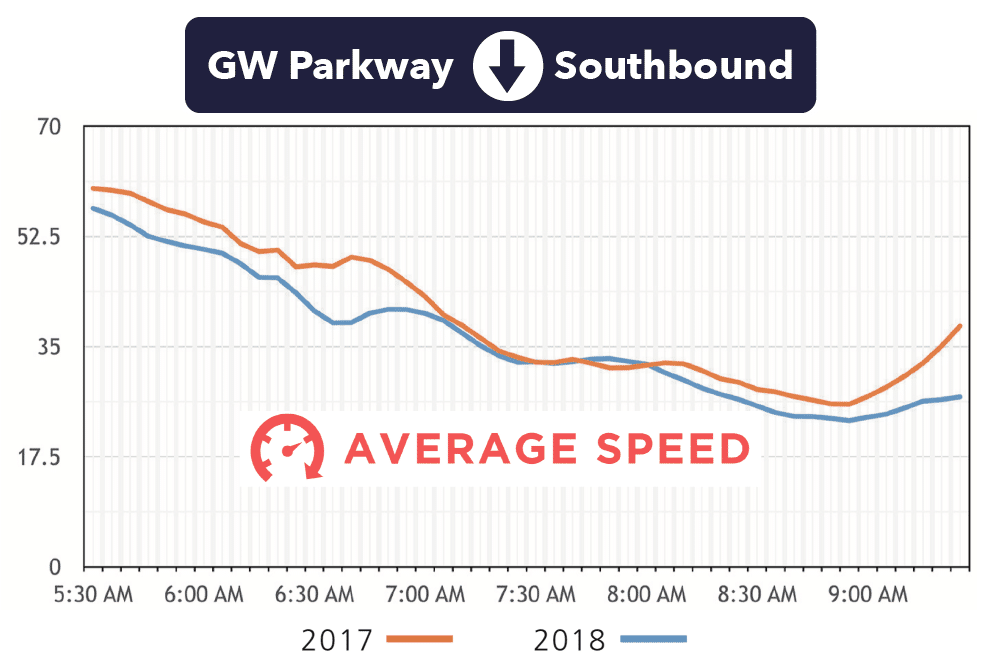
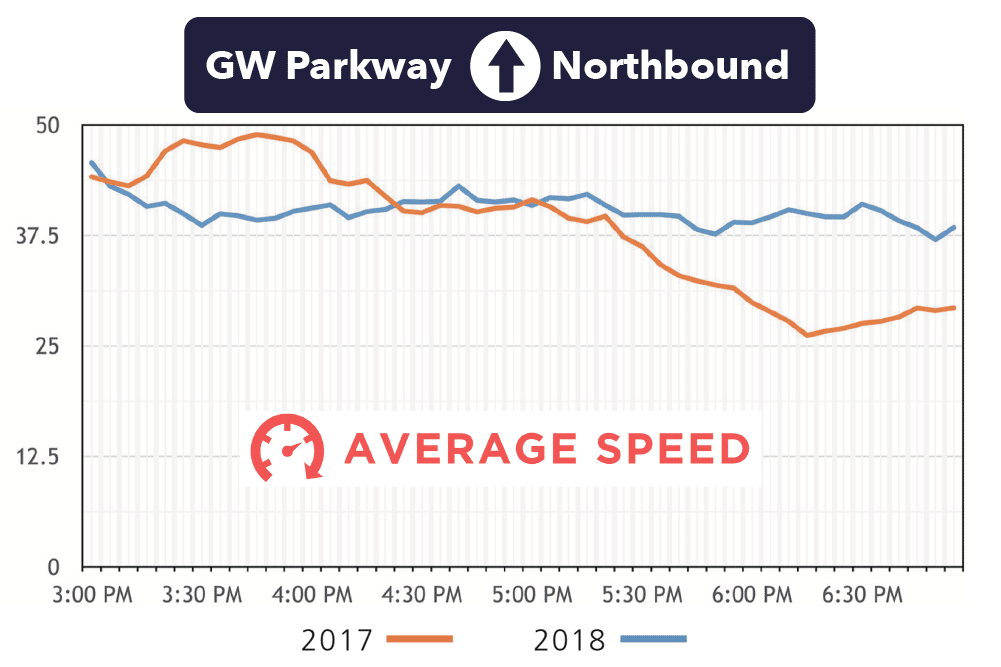
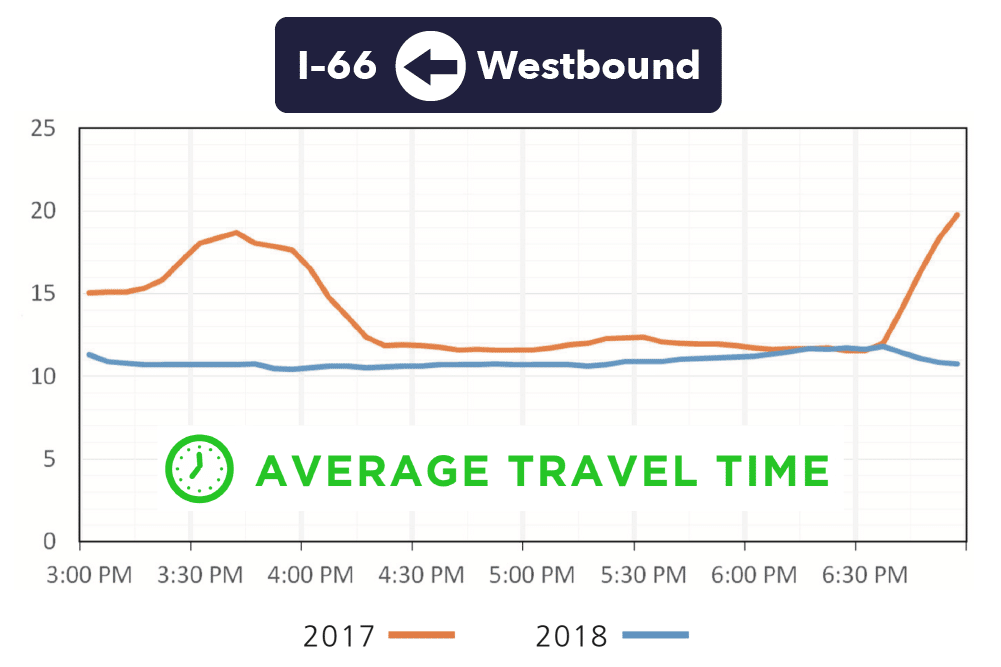
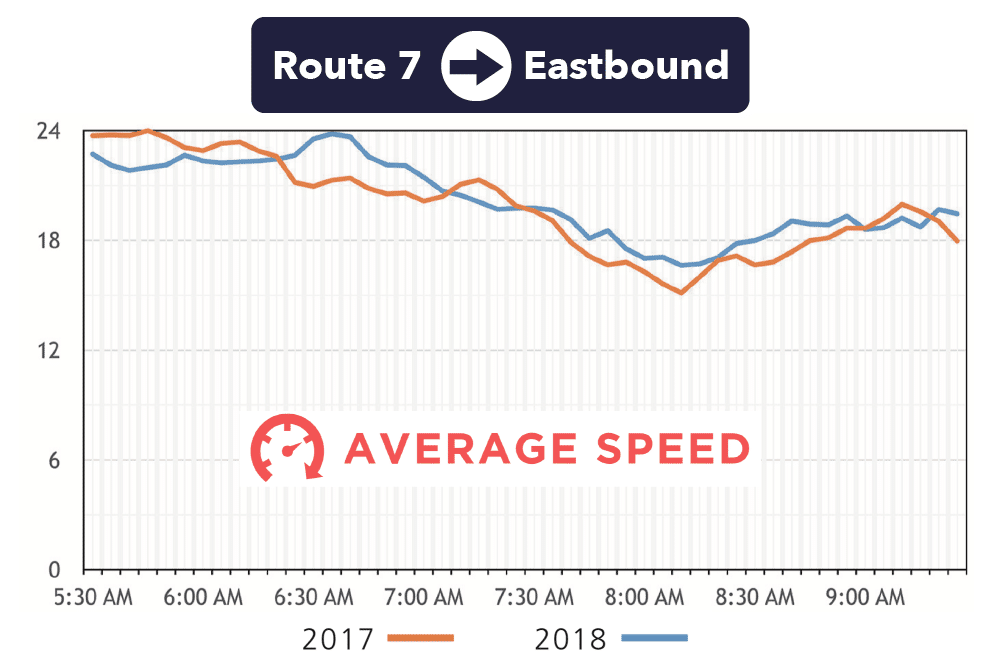
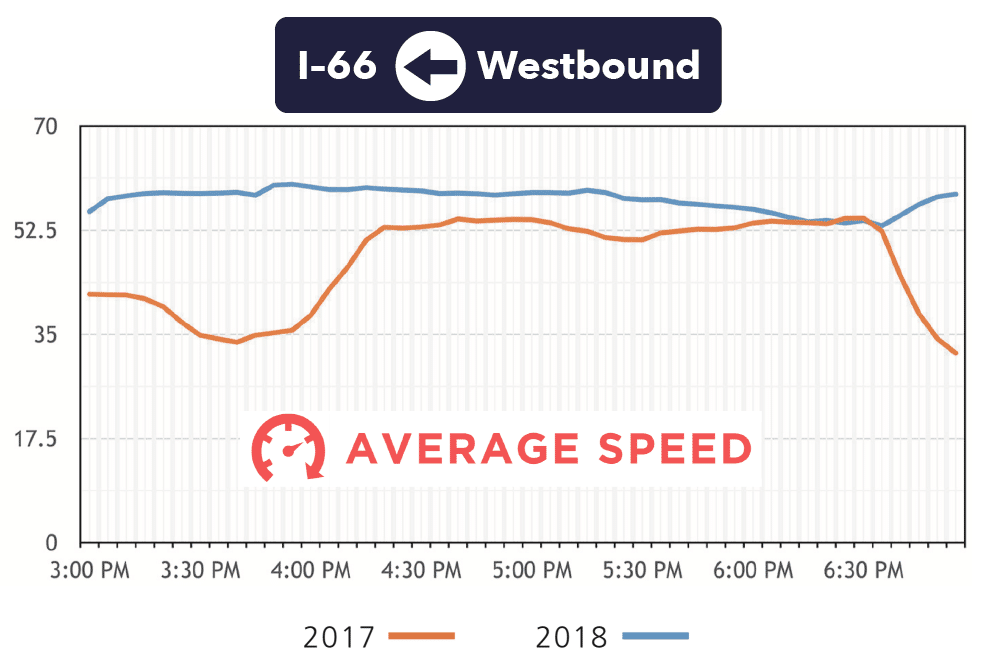
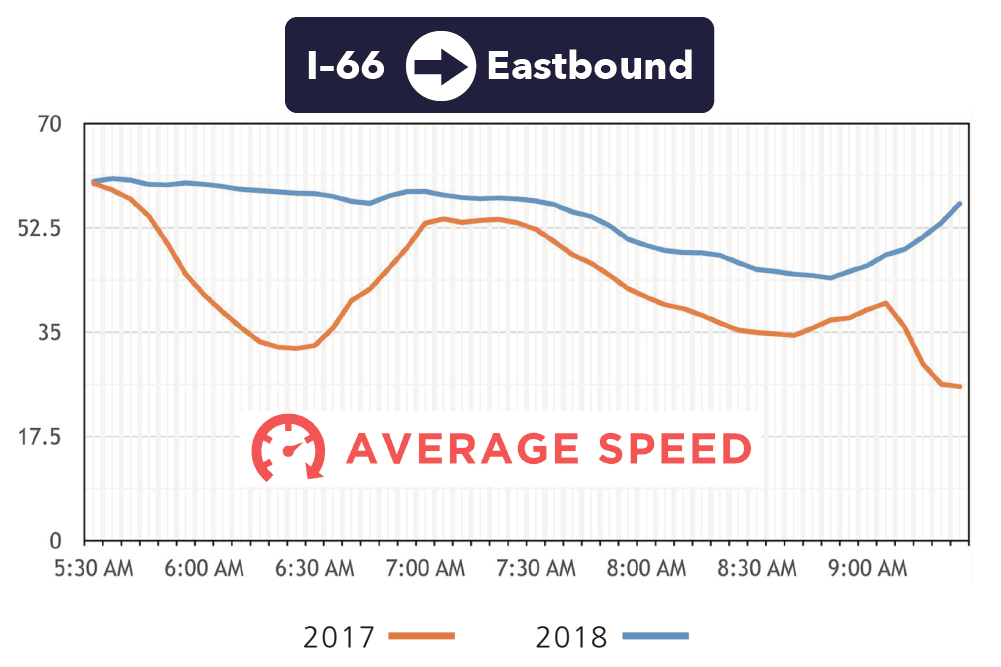
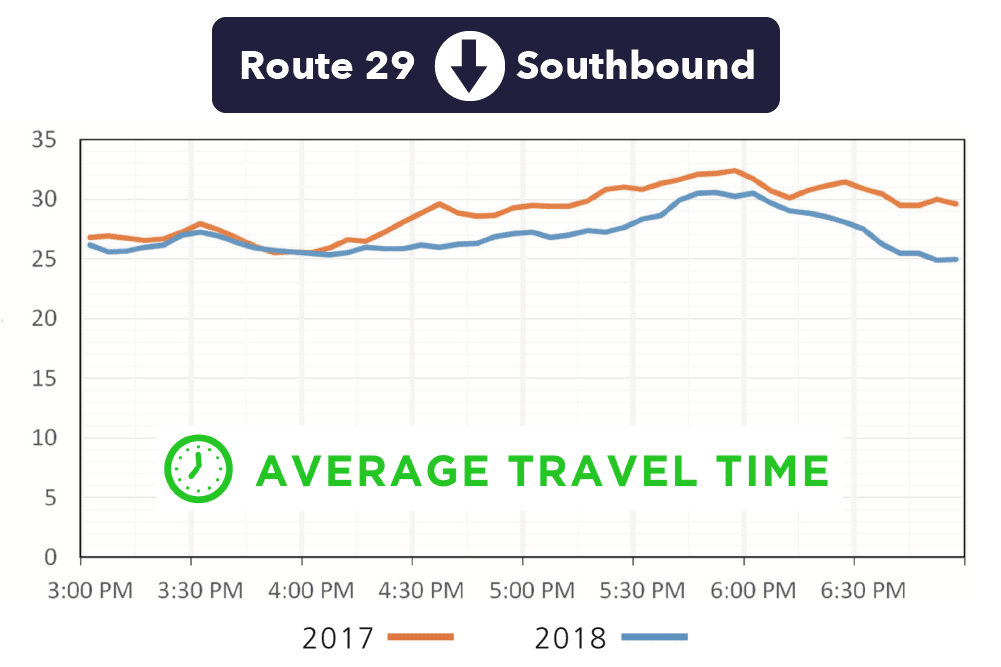
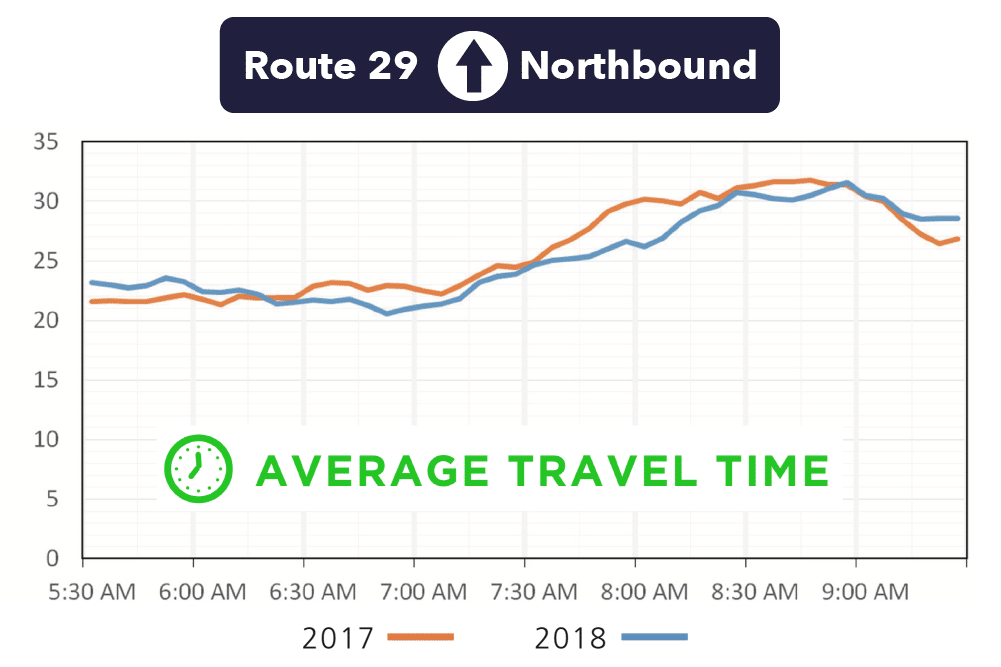
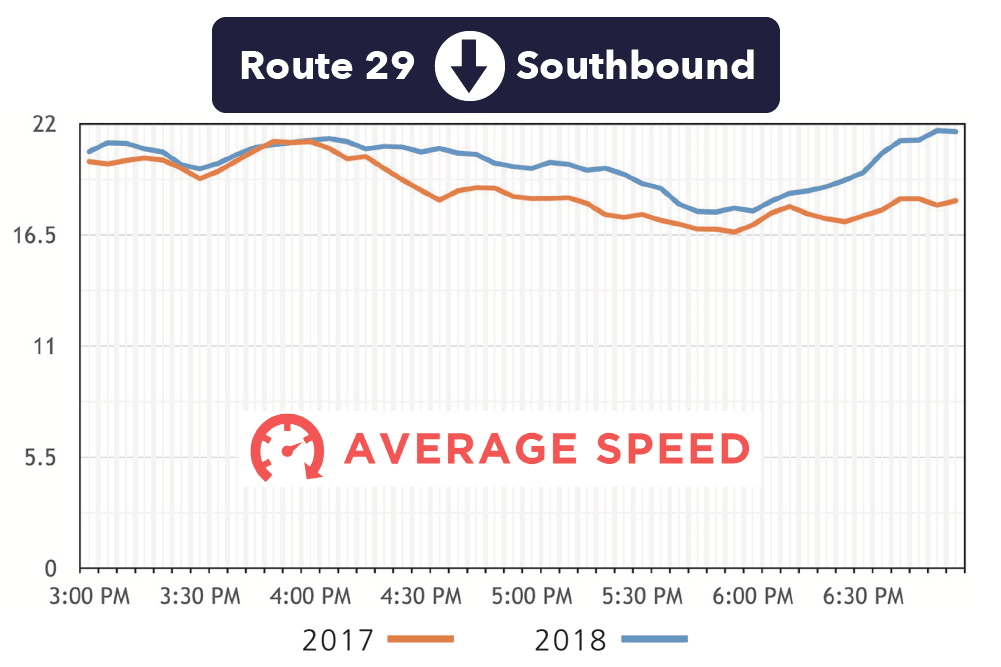
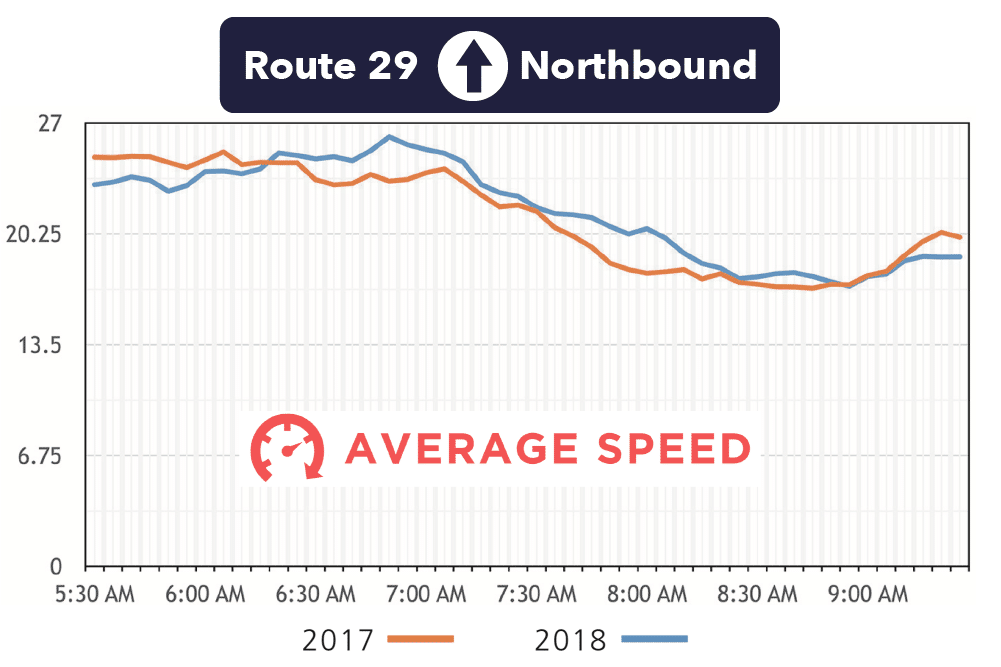
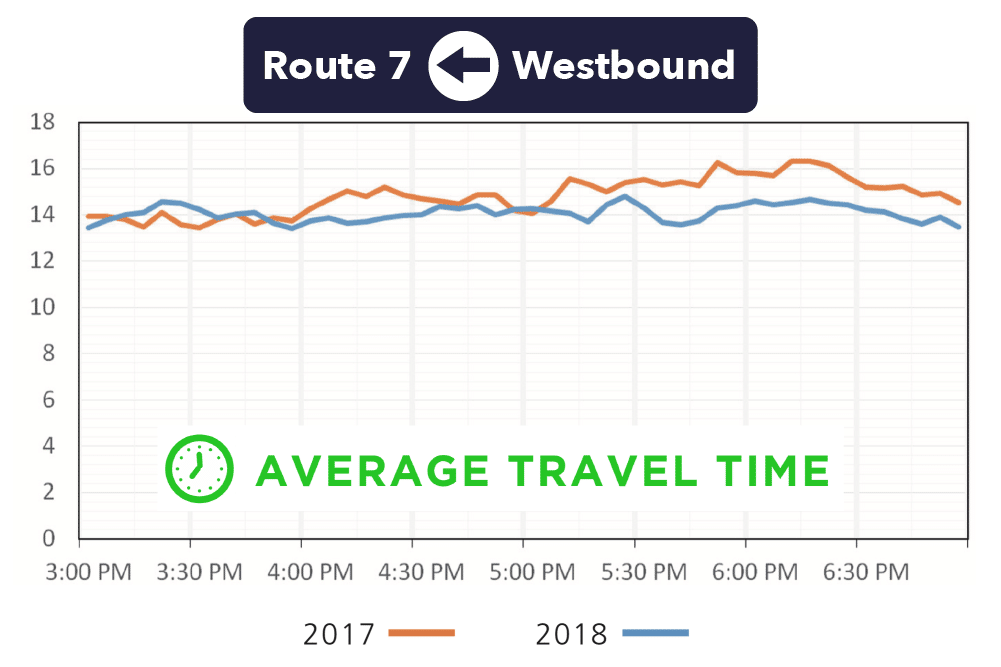
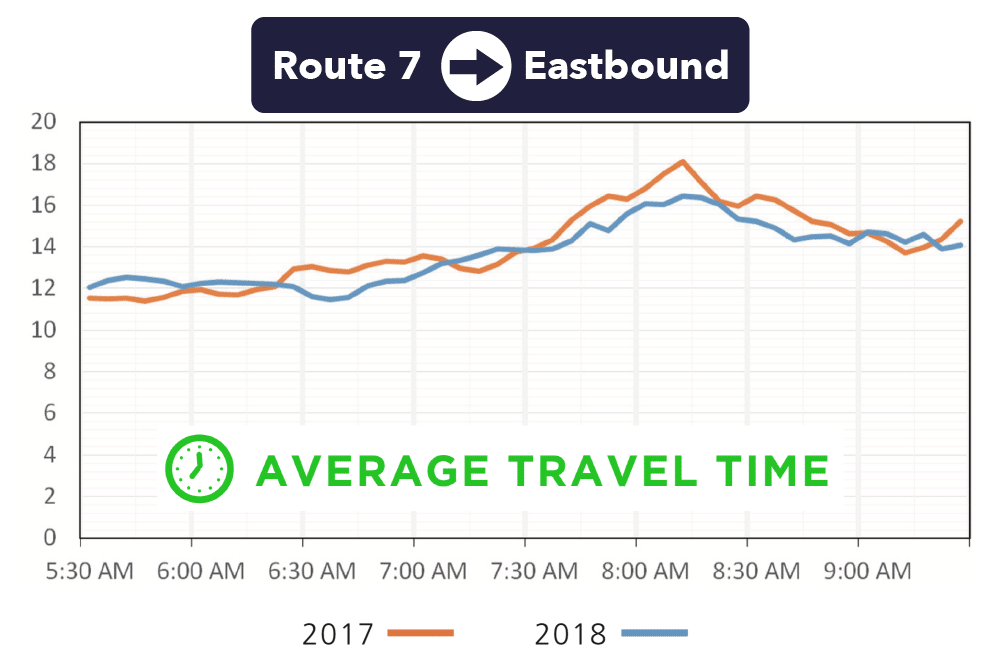
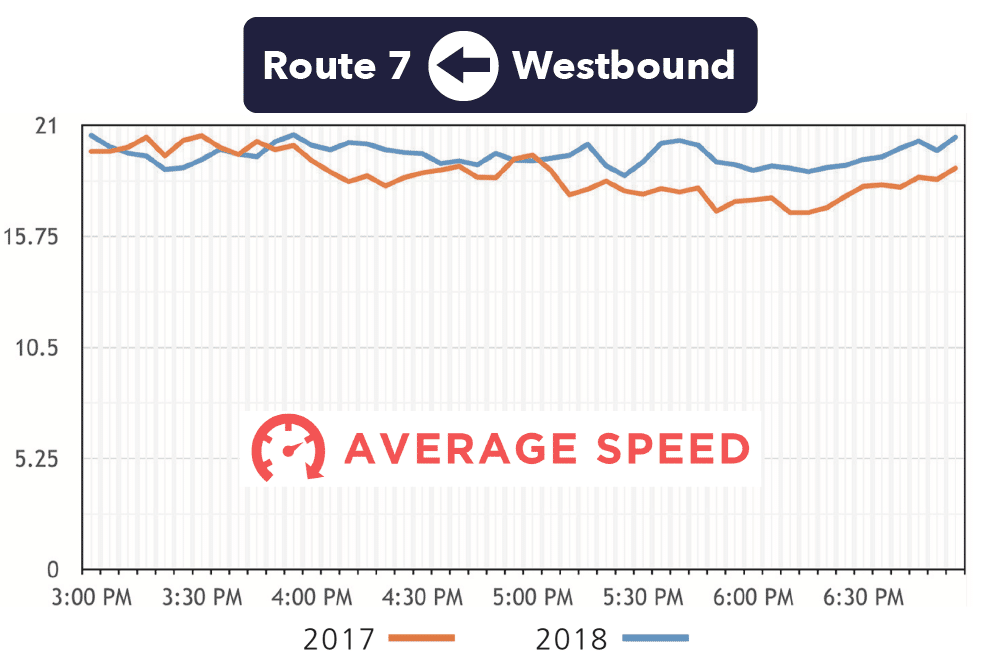
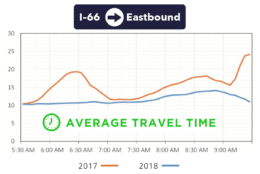
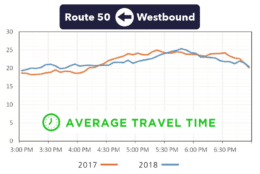
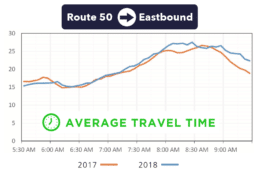
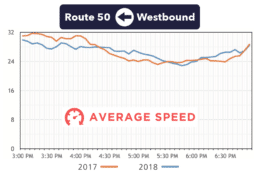
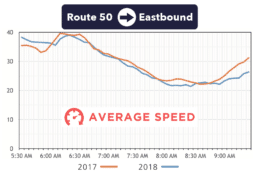
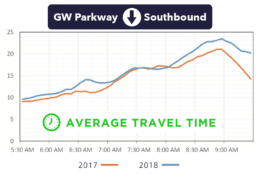
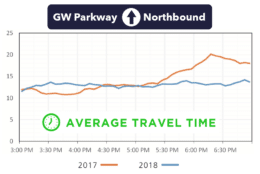
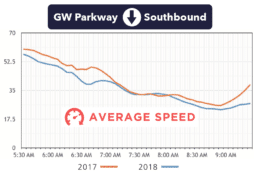
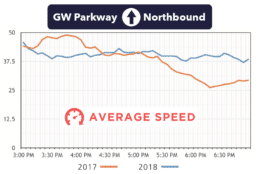
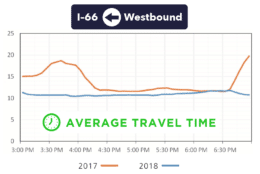
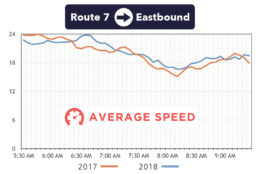
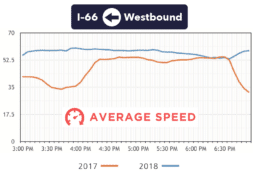
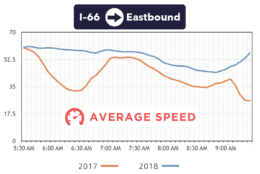
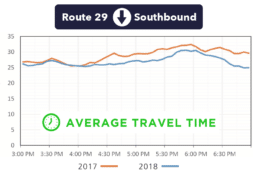
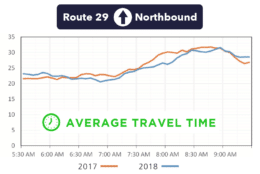
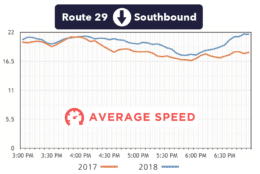
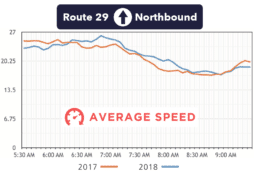

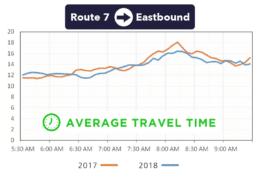
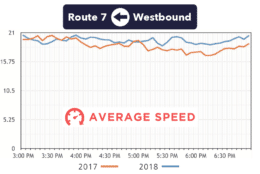
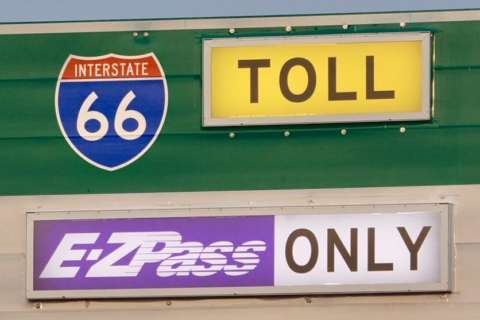
WASHINGTON — As the Virginia Department of Transportation (VDOT) promotes faster speeds along much of the Interstate 66 corridor since tolls and expanded HOV hours were implemented in December, more detailed data has led to a nuanced picture of where traffic speeds up and slows down.
It appears the expanded HOV hours have had the largest impacts, based on different times that average speeds changed the most in January 2018 compared to January 2017.
The data can help some drivers with flexibility figure out which routes are usually best at different times.
G.W. Parkway
On the George Washington Parkway, traffic moved more slowly during morning rush hours in January than the same month a year earlier — adding an average of about a minute and a half to commutes over the entire 4-hour rush period. But a further breakdown shows speeds largely the same — just below 35 mph — between 7 a.m. and 8 a.m., with new additional delays largest just after 6:30 a.m. and between 8:30 a.m. and 9:30 a.m.
The old HOV hours on Interstate 66 inside the Beltway were 6:30 a.m. to 9 a.m. Enforcement was also often lax.
The new hour-by-hour data provided by VDOT focuses on the major alternatives to I-66 inside the Beltway — Route 7, Route 29, Route 50 and the George Washington Parkway — and does not include data on additional delays at other intersections that had been predicted by VDOT traffic studies.
Northbound on the G.W. Parkway in the afternoon, delays increased in January between just after 3 p.m. and just before 4:30 p.m., but commuters later in rush hour have seen significant decreases in traffic jams. After 5:30 p.m. in January 2017, speeds quickly dropped. In January 2018, traffic remained consistent, shaving several minutes off commutes.
The old afternoon HOV hours were 4:30 p.m. to 6 p.m.
U.S. Route 50
Overall average morning travel time along the length of the corridor on U.S. 50 rose from 20.4 minutes in Jan. 2017, to 21.1 minutes in Jan. 2018. Afternoon travel time remained largely the same.
Eastbound in the morning, traffic is little changed most of the morning, but the most significant additional slowdowns are between 8 a.m. and 8:30 a.m., and between 9 a.m. and 9:30 a.m., adding a few minutes to a commute that uses the length of corridor.
Westbound in the afternoon, trips are a bit slower than before between 3 p.m. and 4:15 p.m., but a bit faster than the previous year between 4:30 p.m. and 5 p.m. and 6 p.m. to 6:30 p.m.
U.S. Route 29
Northbound on U.S. 29 in the morning, delays have increased slightly in the extended tolling hours between 5:30 a.m. and 6:15 a.m. and 9 a.m. and 9:30 a.m. At other times, traffic is moving slightly faster now than a year ago.
Southbound on U.S. 29 in the afternoon, traffic is moving faster for nearly the entire four-hour rush period. Travel time for the length of the corridor has dropped two minutes on average to 27 minutes in the afternoon. That is still slower than the morning trip which averages just over 25 minutes.
Va. Route 7
While average travel times along Va. 7 have declined over each four hour rush period, there are times of day where slowdowns have increased.
Eastbound, traffic is slower during the extended hours between 5:30 a.m. and just before 6:30 a.m.
Morning speeds on Va. 7 have increased though from 6:30 a.m. to 7 a.m. and are largely the same or slightly better the rest of the morning. It still takes a few minutes longer to drive Route 7 at the busiest times — between 8 and 8:30 a.m. — than the quieter period before 7 a.m.
In the afternoon, Va. 7 is slightly slower than the previous year around 3:30 p.m., but mostly a bit faster for the rest of the evening rush. In the afternoon, travel times are largely consistent over the four hour period.
Interstate 66
On Interstate 66 itself, average rush-hour speeds are up to 54 mph over the course of January’s morning commutes and nearly 58 mph in the afternoon, each up more than 10 mph over a year earlier.
That shaves about three minutes off a drive between Rosslyn and the Beltway.
In the morning, the biggest change in traffic is the end of the congestion between 6 a.m. and 6:30 a.m. when hundreds of drivers used to try to get to work just before HOV restrictions kicked in. A similar backup that would begin at 9 a.m. has also been pushed off.
In the afternoon, similar backups that would build until just before 4:30 p.m. and after 6:30 p.m. have also been eliminated.
Average tolls paid in the morning rush, including by drivers who only use a segment of the road, were $8.07 in January. Drivers who could have legally used the road before 6:30 a.m. before Dec. 4 paid an average of $2.95.
The average afternoon toll paid by all solo drivers and those without an E-ZPass who got violation notices in the mail was $4.30.
To support the higher tolls during the morning rush than the afternoon rush, the VDOT data show morning speeds regularly drop far below the target of more than 50 mph to closer to 43 mph between 8:15 a.m. and 9 a.m., when tolls usually peak.
Average morning travel times for the length of I-66 inside the Beltway range from 10 to 11 minutes before 7:30 a.m. to closer to 14 minutes around 8:45 a.m.
Those travel times are still faster than before tolls on solo drivers were implemented. The smallest improvement was between 7 a.m. and 7:30 a.m.
In the afternoon, travel times are more consistent, around 11 minutes. That is a significant increase in speed between 3 p.m. and 4:15 p.m. and after 6:30 p.m. when HOV rules did not apply before.
Last year, speeds would quickly drop below 35 mph when the HOV restrictions ended at 6:30 p.m.
Between 4:30 p.m. and 6 p.m. the trip is about a minute faster than a year ago, and there is essentially no change to previous trip times between 6 p.m. and 6:30 p.m.
Backups continue at those times inbound from the Beltway toward Ballston. Virginia’s General Assembly is considering budget language that would add tolls and new HOV rules for people driving in that reverse commute direction by 2020.
As the proposal was adopted by the House of Delegates on Thursday, 65-34, Del. Tim Hugo said it would be a way to force people living in Arlington, Maryland and D.C. to pay more.
Del. Lee Carter, among those who opposed the amendment, argued it would add tolls for workers on overnight shifts commuting back to the Manassas area.
The Senate budget plan does not include the amendment.
A conference committee has until the end of session March 10, to work out a deal, largely focused on a Medicaid expansion fight.

